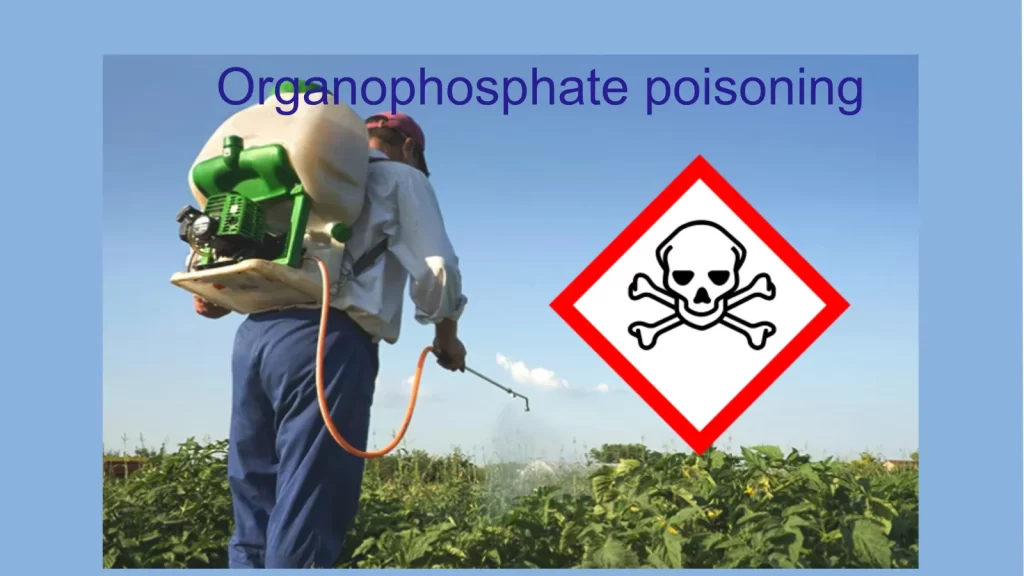Understanding Organophosphate Poisoning: Symptoms, Treatment, and Prevention

In this blog, we will discuss the properties and usage of organophosphorus, its epidemiology, and the absorption routes. We will also take a deep dive into the clinical features according to the system affected and the treatment that is required. We will explore the atropinisation dose and targets as well as the role of oxime in the treatment of organophosphate poisoning. Finally, we will conclude with some tips on how to prevent organophosphate poisoning.
Introduction: Organophosphate poisoning is a serious health issue that can lead to death in severe cases. It is caused by exposure to organophosphorus, which is commonly used in pesticides, insecticides, and herbicides. This toxic substance can be absorbed through the skin, lungs, and digestive system. Therefore, it is important to understand the properties and usage of organophosphorus, its epidemiology, and the absorption routes.
What are Organophosphorus?
Organophosphorus is a group of organic compounds that contain phosphorous as a central atom. They are widely used in agriculture, industry, and warfare as pesticides, insecticides, herbicides, and nerve agents. These compounds are highly toxic and can cause serious health issues when ingested, inhaled, or absorbed through the skin.
Properties and Usage: Organophosphorus compounds are highly poisonous and can cause irreversible inhibition of cholinesterase enzymes. They are used in agriculture to control pests and increase crop yields. They are also used in industry as solvents, plasticizers, flame retardants, and lubricants. In warfare, organophosphorus compounds are used as nerve agents to incapacitate or kill enemy soldiers.
Epidemiology: Organophosphate poisoning is a global health issue that affects both developed and developing countries. According to the World Health Organization (WHO), there are approximately 3 million cases of acute pesticide poisoning worldwide each year, resulting in over 220,000 deaths.
Absorption Routes: Organophosphate compounds can be absorbed through the skin, lungs, and digestive system. Skin contact is the most common route of exposure, especially among farmers and agricultural workers. Inhalation of organophosphorus vapors or dust can also cause poisoning. Ingestion of contaminated food or water is another route of exposure.
Clinical Features: Organophosphate poisoning can affect multiple systems in the body, including the musculoskeletal, respiratory, gastrointestinal, nervous, and cardiovascular systems. The symptoms of organophosphate poisoning depend on the dose, route of exposure, and time of exposure. The common symptoms include nausea, vomiting, diarrhea, abdominal pain, sweating, excessive salivation, blurred vision, headache, dizziness, confusion, seizures, and respiratory depression.
Treatment: The treatment of organophosphate poisoning involves removing the contaminated clothing, washing the skin and eyes with copious amounts of water, and providing supportive care. This may include oxygen therapy, mechanical ventilation, and fluid replacement therapy. Atropine and oxime are the two main antidotes used in the treatment of organophosphate poisoning. Atropine is used to block the effects of acetylcholine and improve heart rate and blood pressure. Oxime is used to reactivate the cholinesterase enzyme and prevent further damage.
Atropinisation Dose and Targets: The atropinisation dose and targets depend on the severity of poisoning and the clinical response. The goal of atropinisation is to achieve a heart rate of at least 80 beats per minute and dryness of the mouth without causing adverse effects. The initial dose of atropine is 2 to 6 mg intravenously or intramuscularly, followed by repeated doses of 2 to 4 mg every 5 to 15 minutes until the target is achieved.
Role of Oxime in Treatment of Organophosphate Poisoning: Oxime is used as an antidote in the treatment of organophosphate poisoning. It reactivates the cholinesterase enzyme and prevents further damage. The most commonly used oxime is pralidoxime (2-PAM). The dose and duration of oxime therapy depend on the severity of poisoning, the time of exposure, and the clinical response.
Conclusion:Organophosphate poisoning is a serious health issue that can be prevented by taking appropriate precautions. This includes wearing protective clothing, avoiding exposure to contaminated areas, and using pesticides safely. In the event of poisoning, prompt recognition and treatment are essential to prevent serious complications and death. Atropine and oxime are the main antidotes used in the treatment of organophosphate poisoning. With early recognition and appropriate treatment, the prognosis of organophosphate poisoning can be improved






Responses